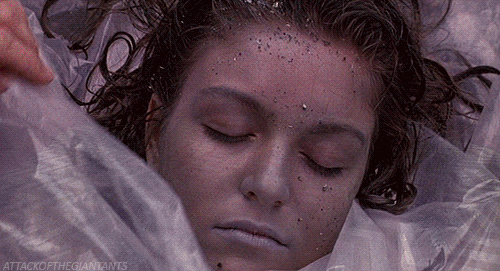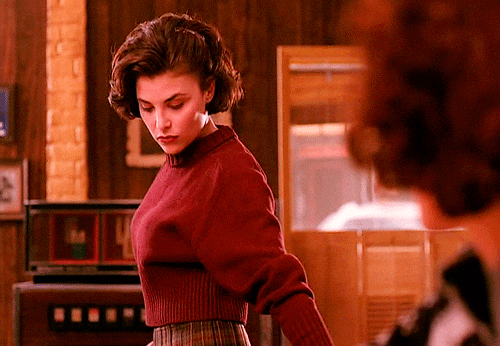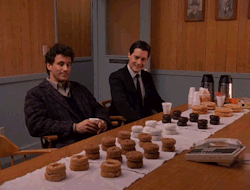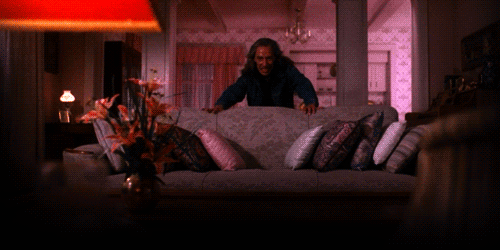Ask your Grandmother if Her First Aid is
Right for You
Ever gotten a sunburn
so bad that it blistered? Ever felt your skin hot and so stiff that you could
barely move? You feel cooked, roasted by the sun, feeling regrettably careless
for staying outside too long, unprotected. At that point, you find yourself a
little more open to suggestions on how to get relief. Once, I got sunburnt after
playing outside at my grandmother’s home as a kid in the early 80’s. Maybe I’d
been swimming next door at my aunt’s pool, or maybe I’d been playing stickball
outside with my brother, killing time and bashing each other’s shins while
waiting on homemade ice cream to be cranked in salted ice until it was set
enough to share.
My grandmother
made the best ice cream using fresh peaches from her orchard, but it seemed to
take a full day of people cranking to make it happen. So I’m not sure how I got
so terribly sunburnt that day exactly, I only recall that my grandmother
suggested an unusual, but effective burn treatment.

For sunburns she
suggested applying Pepto-Bismol topically. Using a clean cotton ball to apply
the pink liquid to my skin before bed felt cooling and it made me smell
somewhat minty. I scrutinized myself in the mirror with hot, tired eyes and
felt I looked noticeably more fluorescent pink than before; coated in a product
I’d been told daily was for upset stomachs by tv commercials. I couldn’t have
been more than ten years old, and I questioned my treatment since it didn’t
match the advertised use for the product. The pink bismuth felt so good though,
and it gave me enough relief from my sunburn that I cooled off and slept through the night. Upon
waking, I was told to take a cold shower to rinse off all the candy-colored
medicine that had been applied to my skin. Miraculously, my sunburn was a shade
lighter and most of the blisters has subsided overnight. For less intense sunburns, I simply use aloe
vera as it heals, but for serious sunburns nothing works as well as my
grandmother’s method.
My grandmother
Lillian Myree was a short, plump, sweet lady who wore her white hair in a bun
pinned in the back. Her dark features were a gift from her Choctaw father. She
used odd phrases for furniture that I only learned later were the influence of
her French mother. She called the couch
the “divan,” and referred to the armoire as the “chevreau” or maybe it was
pronounced “coffer-fort.” She unrepentantly had her own way of doing things
whether it was how she cooked, spoke or showed love for her family through acts
of service.

In the 1930’s she
had trained to be a nurse, but her mother fell ill and Lillian left school
before graduating in order to take care of her for the next few decades. During
that time she still learned medical training that informed the first aid
treatments that she used on her own baby-boomer children, and on us as well
during my childhood. I was never exactly
sure which part of her life influenced each method, the nursing school or her
Choctaw grandmother’s native remedies. So readers should keep in mind that the
first aid suggestions given here are not coming from a medical doctor in this
century, but maybe they should still be considered. Grandma was on to
something.
As an adult, I
discovered that the active ingredient in that pink sunburn remedy Pepto,
bismuth, was used prior to World War II in the burn wards of hospitals. My
grandmother’s first aid tricks were not so crazy after all, it turned out. Her methods came in handy when I had a child
to raise of my own.
My grandmother
lived in a three bedroom, white brick house in South Dallas County with a green
manicured lawn lined by a chain-link fence. Large swathes of iris flowers lined
the yard, the bulbs were gifts to her from friends, church parishioners, and
family. People would bring her flower bulbs of her favorite plant from their
travels. In the spring, her lawn was a vibrant kaleidoscope of brightly colored
blooms. She called the perfumed flowers “flags,” which is what irises are
called in other regions.
The gate between
her front and back yard had an archway that grew pomegranate vines, with lovely
flowers, and fruit that was ripe enough to eat in the heat of the Texas summer.
Her backyard was large enough for a clothesline to dry laundry, a small shed
for the lawn mower, a fenced off area for the cactus garden. There by the
catci, sat my grandfather’s workshop full of tools which smelled of oil,
sawdust, and was coated in thick layers of lead paint. The backyard’s gate led
through a fence covered in grapevines that surrounded a 10’ x 20’ garden full of
tomatoes, garlic, and other vegetables.
 |
| Grandma (center) with her son holding his youngest daughter sitting next to his older daughter. His stepdaughter and grandaughter are in the foreground. |
Behind the garden fence
of their carefully cultivated acre, this edge of the property held the peach
orchard which always smelled sweet with the fragrant scent of fruit hanging in
the air. My grandmother’s French grandfather’s name was LaRue and he had been
the head of the Fruit Grower’s association before the Great Depression wiped
out the old money investments that boosted the status of his large family. As a
child my grandmother had a live-in nanny, before the finances of her family and
country’s fortunes changed in the stock market crash of the Great Depression.
Lillian still remembered the gardening lessons taught by her family which
helped her cultivate a beautiful grove of peach and plum trees in the orchard that
she cared for in her later years, behind her little white house on the edge of
the county.
 |
| Grandma (center) with all 3 of her kids & 7 of 10 grandkids. |
Lillian’s back
porch had been converted into a laundry room by her husband during a renovation
where he also added a second bathroom to the house. He built these added
conveniences to the home himself and after retirement he spent more time with
his wife building and sprucing. The back bathroom he built always smelled like
him, the industrially saccharine smell of Lava soap that he used to pumice the marks
of work off his calloused hands. He never sat idle, both he and my grandmother
always stayed busy around the house, improving the small patch of ground that
they spent 50 years paying off. The
neighborhood changed after my grandfather died in 1985. Their city had been a
farming community after WWII, until the baby boomers pushed its development into
being a suburb. A series of tornados in the 90s devastated the town and many
residents moved away after infrastructure wasn’t replaced. As my grandmother
faced her remaining years without her partner, many of her remaining neighbors
after the storm had less job options and it seemed like more turned to crime.
But before in the 80s, the neighborhood wasn’t so bad and Dallas had built a
huge freeway along the edge of their neighborhood giving my grandparents’
descendants easy access to the jobs or resources of the larger neighboring city
of Dallas. My grandmother lived two decades longer than her husband in that
house as those changes to her city unfolded around her. Progress changed her
city as much as scientific advances updated what was seen as effective
medicine.
When she was still
alive, we visited her house every day to check on her and help around her place.
Her house was usually immaculately clean and her kitchen smelled like the
original liquid Lysol disinfectant that came in a dark brown bottle. The thick
pink liquid had a strong antiseptic smell that always indicated a clean home to
me as I think back on her kitchen. Sometimes I catch a whiff of the smell of
Lysol in hospitals now, and it makes me feel nostalgic for her. As kids if we
were ever sick with any sinus infections, my grandmother would boil a pot of
water on the stove to create a vaporizer effect for us to breathe. The warm humidity was amazing for breaking up
our congestion as we inhaled the infused air from the next room.
She always added a
cap of Lysol to that pot of water on the stove so it would diffuse into the air
when anyone was sick. The method is still effective, just as it was game
changing for the hospitals at the turn of the 20th century when
Lysol was used to eliminate cholera epidemics and helped put an end to the
Spanish Flu pandemic that killed so many people. As unusual as this Lysol
method sounded to my friends, I kept doing it because it was scientifically
proven in its day and still appears to work now. When someone’s got a cold, you
can count on me running a vaporizer and making chicken soup to help hydrate the
person and break up their congestion with the very air they breathe and warm
liquids they consume.
My mom was okay
with her mother-in-law’s home remedies. Mom never shied away from rolling up a
newspaper and doing ear candling on us to do relieve ear infections. Years
later, I discovered ear candles made with cheesecloth and coated in beeswax for
sale in stores. The modern ear candles used the same method to suck infectious
goop out of an infected ear that had eased my ear aches as a kid when my mom
did it. Mom’s dry newspaper method created the same soft vacuuming action but
wasn’t as safe because without the wax, since the risk of falling ash was a
little harder to control. Nowadays, the beeswax soaked ear candles hold
together better as it ashes. Often people make a little shield out of foil or a
paper plate that provides a barrier between the burning ember and grey ash,
protecting the person’s hair and skin. Earcandling is a slow process that
requires a partner to trim away the ash as the candle burns down and keep an
eye on it to make sure that the candle isn’t allowed to burn too long or down
too near the patient. Earcandling should
never be done without a partner ever and should be considered a fire hazard
with necessary precautions taken.
My grandmother
didn’t disapprove of her son’s wife’s earcandling, but she preferred science
and doctors to the use of fire. I think grandmother viewed mom’s process
skeptically. However, grandma did recommend use of needle and white thread on
blisters that didn’t come from burns. Burn blisters were to be left alone. All other blisters were carefully lanced with
a threaded needle, and just enough white thread was left running through inside
the blister so that a bit stuck out of each side. Then with scissors she
trimmed the thread and left it in overnight.
The thread would absorb any liquid, the blister would flatten, and the
very next day she would ever so gently pull the thread out by its exposed end.
Usually it healed quicker and didn’t leave a mark, nor could you see the
puncture. She admonished us not to ever use colored thread, that its dye could
poison your blood stream. “Only white
thread could be used on skin,” she said.
Her first aid
cabinet had most of the standard drug store medicines common to American homes
at the time. By the time I came around in the 1970s, her use of stinging iodine
on cuts left red stains and made me a little nervous about asking for help for
minor wounds. She kept a bottle of mercury laced mercurochrome for scratches
and scrapes as well, a product that was banned in 1998.
Grandmother kept a
balm called drawing salve around in case anyone had a splinter or got bit by a
poisonous spider. I found a similar drawing salve called Prid’s which is dark
green and sticky with pine tar that smelled like a Christmas tree. You put a
glop of it on your splinter and cover it with a bandaid. Overnight, the
chemicals pull the splinter out of the wound and in the morning you can remove
the bandage and see the splinter stuck to the gauze. This product works for
wood, glass, or metal splinters. I even used it after being bit by a brown
recluse spider recently and luckily did not have any resulting flesh necrosis.
Its active ingredient Ichthammol is a byproduct of Sulphur but is
scientifically proven to have drawing properties which suck out poison just
like my grandmother said it did.
I still visited the
doctor after getting bit by that spider because brown recluse poison can be fatal to humans. No matter
how great a home remedy is, it is always important to visit a health care
professional when your life is at stake. The doctors gave me a steroid
injection and told me to keep an eye on it as they sent me home. Yet, the young
doctors didn’t have drawing salve on their list of recommended medicines suggested
by the pharmaceutical manufacturer representative. Reps hype new brands and
promote certain maker’s lines of products at the exclusion of other older, less
expensive, yet often still viable remedies. A lot of older products fall out of
fashion. In the case of herbal remedies, there isn’t often a lobby group to woo
the FDA to find favor with things that grow out of the ground. Such as Pepto-Bismol
after the war, newer remedies were created to deal with burns and advertising
agencies narrowed the focus for the product as years went on. Some of the remedies I mention here are no
longer available, but for the products that still exist it is interesting to
see how their advertising money is spent.
Grandmother was a
big fan of Vick’s vapor rub for congestion and colds, with its oily compound of
penetrating camphor, eucalyptus and menthol in a petroleum jelly base like
Vaseline. Modern methods focus more on oral medications for congestion instead
of topical remedies. For people with heart conditions or drug sensitivities,
they may prefer alternative methods like putting a bit of the mentholated salve
under the nose to open up sinus airways and nasal passages. When Grandma was
making an attack on a chest cold, she’d apply it liberally on the sick person’s
chest and back around the outside of the lung area. The final method she used
is frequently debated online these days, but it does seem to work. She would coat the bottom of the ill person’s
feet with Vick’s Vapor Rub until your soles shined and the minty odor filled
the air. Then she’d put white socks on their feet and send them to bed. This
mentholated covered feet method often reversed the person’s illness and got
them back on the right path to health. As an adult who visits an Asian foot
massage parlor to get refloxology done, I often wonder what the people using
various techniques and herbs to relieve any aches from my feet would think
about my Grandmother’s method; but the language barrier is too great to ask.
Grandma Lillian’s
most unusual remedy was for bee stings. She used a laundry additive called
bluing to clean the bee sting, applied with a cotton ball. It would neutralize
the poison and leave a peculiar, cobalt blue stain on the skin. A product
called Mrs. Stewart’s Liquid Bluing has been sold since 1883 and most people
only know of it from school science fair projects as one of the ingredients
used to grow crystal formations. Their website confirms the product has been
used for decades to relieve insect bites from ants and even bees. They mention
studies done by the University of Indiana that verified the product’s pain
neutralizing and anti-inflammatory effects. So I still keep a bottle of bluing
in my laundry room, just like my grandmother did. My daughter looked at me just as skeptically
when I first grabbed it to use on her bee stings, but found that it brought
instant relief of pain and decreased swelling. As strange as people found this
ancient remedy, I could not throw it away when it still works better than any
other insect bite product on the market.
Having a good
first aid kit is a necessity when you go camping as much as I do. My
grandmother took us camping for years, where we cooked our meals in cast iron
skillets over a campfire and roasted hot dogs and marshmallows on skewers we
made out of straightened out wire clothes hangers. When we got hurt in the
woods, we didn’t abandon camp and rush home. Instead we treated our injuries,
dried our tears, and stuck it out till the trip was over for the sake of the
collective group.
Now I find myself
testing out new methods for dealing with things that may not have a
satisfactory modern product offering to medically combat minor ailments. Super
glue really does work as an alternative to stitches for small wounds. It was
originally developed for the purpose of closing wounds and used on soldiers
during the Vietnam War, but is currently marketed for other things. I recently sliced
my hand open and probably deserved three or four stitches, but being without
health insurance I chose to try out the super glue method instead. You don’t
want to close the wound up entirely but leave a few gaps for it to seep from
and to allow it to dry out. So you don’t draw a line parallel to the cut or
directly on top of it, instead you make a number of liquid “stitches” that cross
the wound perpendicularly. This keeps the wound closed up tight, but still
allows it a bit of air to heal and not fester.
You still go about cleaning the injury on a daily basis as it heals by
soaking it in hot water and Epsom salt, but reapply your super glue stitches
after each cleaning. Don’t totally pull
the glue off each time or you can reopen the cut, it will naturally fall away
on its own usually. I don’t think most people have tried this method in the
first world, however it a useful tool for emergencies. Just like it turns out that duct tape on a
bullet wound can help create enough temporary pressure to possibly keep someone
alive till they get to the hospital for real treatment. This sounds strange,
but is all true from what I have seen. Perhaps I wouldn’t have been open to learning
these things if I hadn’t been exposed to my grandmother’s unusual first aid
methods.
My grandmother
drove me to a camp for Native American teenagers one summer. I got eaten alive
by mosquitos in the dorms at Tahlequah. I don’t remember there being air
conditioning in all the buildings at camp, so we kept the windows open to the
dorms where we slept in our bunks. I was miserable and had no way to get to a
drug store for a week to pick up calamine lotion. In desperation, I
methodically tested every random tincture and cream I’d packed in my makeup
case for the trip. With a marker, I carefully circled and numbered each
mosquito bite on unexposed skin that could be hidden under my clothes during
the day. I didn’t need any teasing over my experiment from the other kids. I
wrote out a little log in my spiral notebook, listing out the bite number and
its corresponding treatment. I tried soap, tiger balm, liniment, makeup,
mouthwash, anything that seemed like it might make the vicious itching and
swelling of the pesky bites stop. Each night I reapplied the same product to
the same circled itchy spot. Each day, I noted any changes to the bite in my
log. Remarkably, the winner against
fighting Oklahoma mosquito bites was a product from Australia, 100% tea tree
oil.
None of the other
products came close to the overnight elimination of the bite mark in most cases
and almost instant pain relief of tea tree oil. Later I found upon returning to
civilization that calamine can’t beat the speed and effectiveness of tea tree
oil. When my own daughter went to sleep-away camp with the Girl Scouts, I
picked her up at the end and met her counselors who were interning her in Texas
on loan from Australia. During the
finale performance of the campers, I watched her counselors squirm and scratch
at their bug bites. After the show before we could go, I pulled the counselors
aside and told them that my secret to beating the mosquitos was a product quite
familiar to them. They were shocked. After months at camp suffering, they discovered
the solution was a product they both had in their bags the whole time, a
product not marketed for something it does well.
I think my
grandmother taught me to be nurturing, with a tendency to confront injuries
even if they are scary. Often I share unsolicited first aid advice, but always
ask for consent before providing direct assistance, and I am quite used to
getting skeptical looks when I pull out odd blue liquids or super glue. But I
make a joke to take their mind off the pain, call 911 when needed, and ask them
if they’d like to try some old method I learned that seems to make it hurt
less. Because anytime you’d ask my grandmother how she was doing, she always
replied, “Fat and sassy” with a laugh. Maybe it’s a good thing to accept
ourselves as imperfect humans and let us laugh at ourselves, our own mortal
fallibility. Instead of being embarrassed when we stumble, allow ourselves to
laugh at our unplanned prat-fall. At the same time, it is useful to fact check
the methods we use to care for ourselves, and not be limited to the products
that are actively marketed to us by advertisers.
How many ads have
we seen that tell us to ask for a specific product to be prescribed to us? “Ask
your doctor if Aspirin is right for you?” Aspirin, mercurochrome, whatever the
product in the ad is, are we reaching for the most historically effective
remedy or the trendiest, latest, least tested method with the biggest ad budget
and lobbyists working over the FDA? Don’t we already know that auctioneer
recitation of all the side effects in prescription ads are merely admitting
that the new products are still being tested with us acting the part of the
hopeful guinea pig. This is okay, because this is how we help find the best
methods by testing both older methods validity alongside scientific advances
that may still be evaluating how it affects outlier populations over time.
Perhaps we
shouldn’t completely discount those well intentioned, nurturing suggestions
made by our grandmother just because we aren’t sure how to call them up on
google. As long as your relatives are not suggesting dangerous things involving
Windex or leeches, it might be worth paying attention to their tried and true
old methods that got them this far along in age. Pain reliever studies aren’t
always promoted if there isn’t a profit, and sometimes we find grandma knew
good stuff that still works.












































